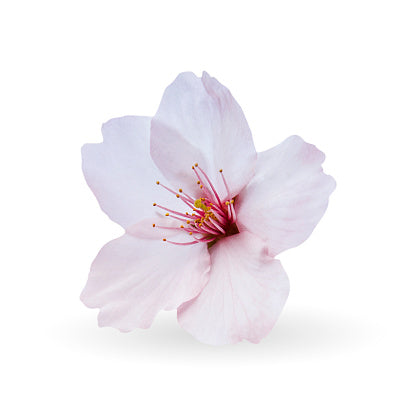EkoWorld
Plum Blossom Necklace in 925 Silver
Plum Blossom Necklace in 925 Silver
Couldn't load pickup availability
Free shipping
Free shipping
Returns and exchanges within 30 days
Returns and exchanges within 30 days
Returns and exchanges up to 30 days after receiving your order!
The return can be requested within 14 days of receiving the order, and made within 30 days after receiving the order.
10% discount if you add it in the 🛒
10% discount if you add it in the 🛒
Unlock an additional discount when you buy multiple items!
The more you buy, the more you save! ❤️
The more you buy, the more you save! ❤️
The more you buy, the more you save!
Buy 2 Items with 15% discount
Buy 3 Items with 20% discount
Buy 4 Items for 25% off
The plum blossom, symbol of perseverance and courage
With its delicate pink petals, the humble plum blossom can easily be mistaken for its cousin, the cherry blossom that blooms in spring. But the plum blossoms bloom in the middle of winter. In the midst of frost and snow, its bright and hardy flowers are an exciting sight, symbolizing perseverance and courage in the face of adversity.
In art, plum blossoms are often depicted alongside their winter friends, pine and bamboo, to represent the values of determination, honesty and modesty. Mostly, these flowers symbolize the hope and promise that spring is, really, just around the corner.
In Chinese culture, flowers are models of beauty and morality, integrity and courage, purity and hope; radiant in all their forms, they enrich ancient Chinese society both inside and out.

Although the plant is native to China, it has been cultivated since ancient times in Korea, Japan and Vietnam. The plant is cultivated for its fruits, and for its flowers.
Another species often identified as "Japanese plum" is the Sumomo .
In Japan, cultivated Ume plants are divided into yabai (literally, "wild Ume"), hibai ("red Ume"), and bungo ("from Bungo Province"). Bungo plants are mainly grown for fruit, and are supposed to be the result of a hybridization between Ume and apricot. Hibai plants have red heartwood and most also have red flowers. Because of their robustness, yabai (wild) plants are often used as rootstocks.
The plant has one of the earliest flowering periods in Japan (January or February); the flowers are small but the flowering is abundant and quite showy; it occurs, as mentioned, before foliation (like almost all the other fruit trees of the rosaceae).
In Italy, flowering is very early, precedes or is contemporary to the almond tree (Prunus dulcis) and therefore can be subject to damage or insufficient pollination in cold climates or with late frosts, as happens for other early flowering Sino-Japanese plums.
The fruits ripen in early summer, usually (in Japan) in June.
30 DAY MONEY BACK GUARANTEE
are you not satisfied with your purchase? You will have the option to return it and receive a full refund within 30 days of payment.








Discover all the jewels
-

Tree of Life
The Tree of Life commonly represents the interconnectedness of everything in the...
-

The magic of Flowers
Floriography is the 'language of flowers'. Dating back to the Victorian times...
-

World Fruit Jewels
Jewels in 925 Silver and Natural Stones inspired by the world of...
-

Animal Kingdom
The animal kingdom has been a rich source of inspiration for jewellery...

Turtle ring

Natural Stone Ring

Dragonfly earrings

Serpent Ring

Donut Charm
Popular caregories ...
View all-

Lotus flower
Lotus Flower Inspired Jewelery ...
-

Plum blossom
Jewelery inspired by the Plum Blossom
-

Sakura flowers
Sakura flower inspired jewelry ...
-

Guaranteed quality
Over 25,000 satisfied customers worldwide. -

Secure payment
We entrust the management of our online payments to Stripe and Paypal , 100% safe. -

Money Back Guarantee
Returns are possible up to 30 days from receipt of the items.

4,98 su 5 stelle
Basato su oltre 300 Recensioni.
Visualizzane una selezione o inviaci una tua foto per ottenere un Buono da 10 €




























